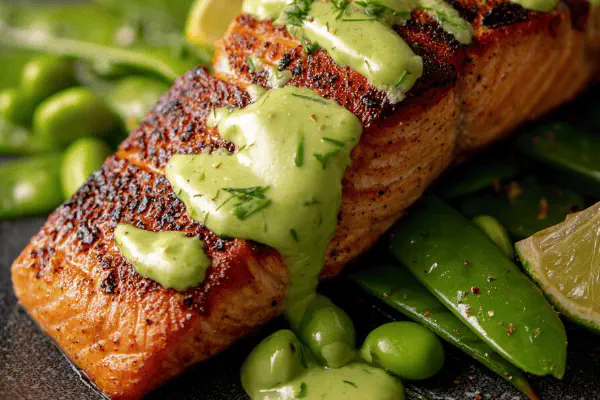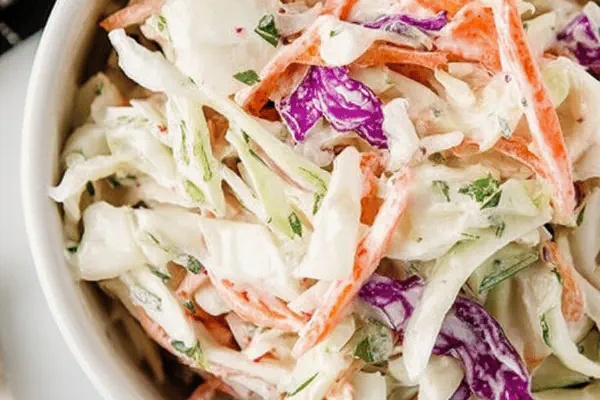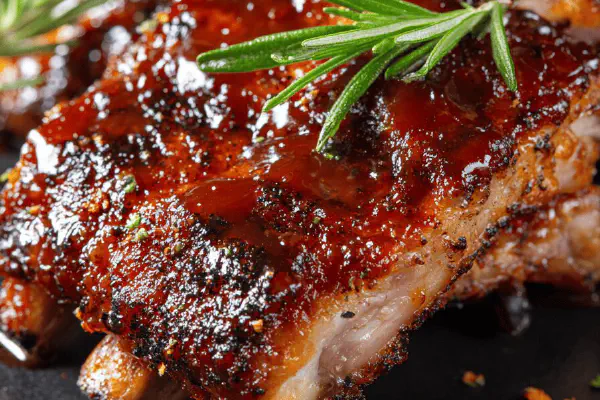Featured Recipe
Sweet-Spice Glazed Salmon

By Kate
"
Salmon filets rubbed with a brown sugar and smoky spice blend, grilled or baked to tender, succulent flakes. Topped with crispy shallot strings for crunch and savory sharpness. Simple seasoning, balanced sweetness, and a bit of heat from smoked paprika and chili powder. Uses granulated sugar instead of light brown for a cleaner caramel. Garlic powder swapped for smoked onion powder to deepen umami. Cook by feel not clock; flawless flaking is the real doneness signal. Salt and pepper anchor the flavors, green onions finish with fresh bite. No complex sauces here, just direct heat and well-honed seasoning techniques.
"
Prep:
8 min
Cook:
18 min
Total:
26 min
Serves:
4 servings
salmon
grilled fish
BBQ
Introduction
Salmon with sugar and spice glaze. No fuss, pure technique. Dry the fish well. That moisture kills crust attempts. Mix sugar and spices to a sticky paste, smeared on thick but even. Heat level controlled by chili, can dial mild or bold. Oven or grill—grill adds smoky edge, oven more forgiving. Watch for glistening flakes that separate with slight pressure. That’s doneness, not just timers or color. Top with fried shallot strings for crunch and caramelized aroma. Green onions freshen every bite. No fancy sauces here; every ingredient earns its place. Technique over flair. Precision over guesswork. Harness heat, time, texture. It’s that simple.
Ingredients
About the ingredients
Granulated sugar replaces light brown for a cleaner caramel note but still catches heat rapidly. Smoked onion powder swaps garlic powder to deepen savory layers without overpowering. Chili powder is adjustable; prefer smoky chipotle for variation or replace with a pinch of cayenne if you want sharper heat punch. Crispy fried shallot strings best fresh or store-bought for consistent crunch. Can substitute crispy fried leeks for more delicate onion flavor. Olive oil incentivizes paste adhesion and helps with caramelization. Salt and pepper foundational; don’t skimp. Drying salmon is non-negotiable; water ruins crust, causes steaming. Skin left on holds filet together but remove if preferred—adjust cook time slightly if removing skin.
Method
Technique Tips
Temperature control critical. Preheat to 360 oven for even cooking, slightly warmer than the original to compensate for slower caramelization with granulated sugar. Grill on direct medium-high heat; listen for gentle sizzle, smell sugar darkening in air. Spread spice paste thick but avoid dripping wet; watery paste causes steaming and soggy glaze. Watch fish for visual clues: flesh naturally opaque, plumping, flakes separating easily when prodded lightly with spatula or fork. Prefer touch cues over timers—fish continues cooking off heat. Crispy shallot strings added last to preserve texture against heat. Garnish with green onions last second for bite and color. Avoid flipping in grill too much; skin-side down keeps filet intact, controls cooking speed. Leftovers keep well, flavors intensify overnight. Simple prep pays off with refined finish.
Chef's Notes
- 💡 Start with dry filets. Pat dry with paper towel. Moisture causes steaming. Not what you want. More caramelization happens with dry fish. Salt right after drying; flavor adheres better. Keep it simple.
- 💡 Spread spice paste thick but not too wet. Watery paste leads to a mess. No one likes a soggy glaze. You want that crunch on top. Watch for darkening sugar—indicates nearing doneness. Stay close.
- 💡 Cooking time is a guideline. Fish cooks differently based on thickness. Check for glistening flakes—when they separate easily with the spatula, it signals perfection. Don't rely too much on timers.
- 💡 For grilling, avoid excessive flipping. Keep skin-side down mostly. Protects fish shape. Direct heat will caramelize sugars well. Adjust cook time for different methods. Listen for that subtle sizzle.
- 💡 Use smoked onion powder for more depth. If it’s not available, garlic powder will work fine too. Spice blend can be tweaked; suggest chipotle for smokiness or cayenne for heat. Think outside the box.
Kitchen Wisdom
How can I tell when salmon is done?
Look for flaking. Test gently with a spatula. If it pulls apart easily, you’re set. Do not fear using your hands, but be careful.
What can I use instead of fried shallots?
Fried leeks are an option, crispy texture intact. Store-bought French fried onions also work well. It’s all about that crunch on top.
What's the best storage method for leftover salmon?
Store in an airtight container. Keeps well cold. Flavors deepen, can use in salads or sandwiches. Moisture retains with glaze.
Can I remove the skin before cooking?
Yes, but time needs adjustment. Fish can fall apart easier. Watch closely, check often. Slightly less cooking time if skinless.



